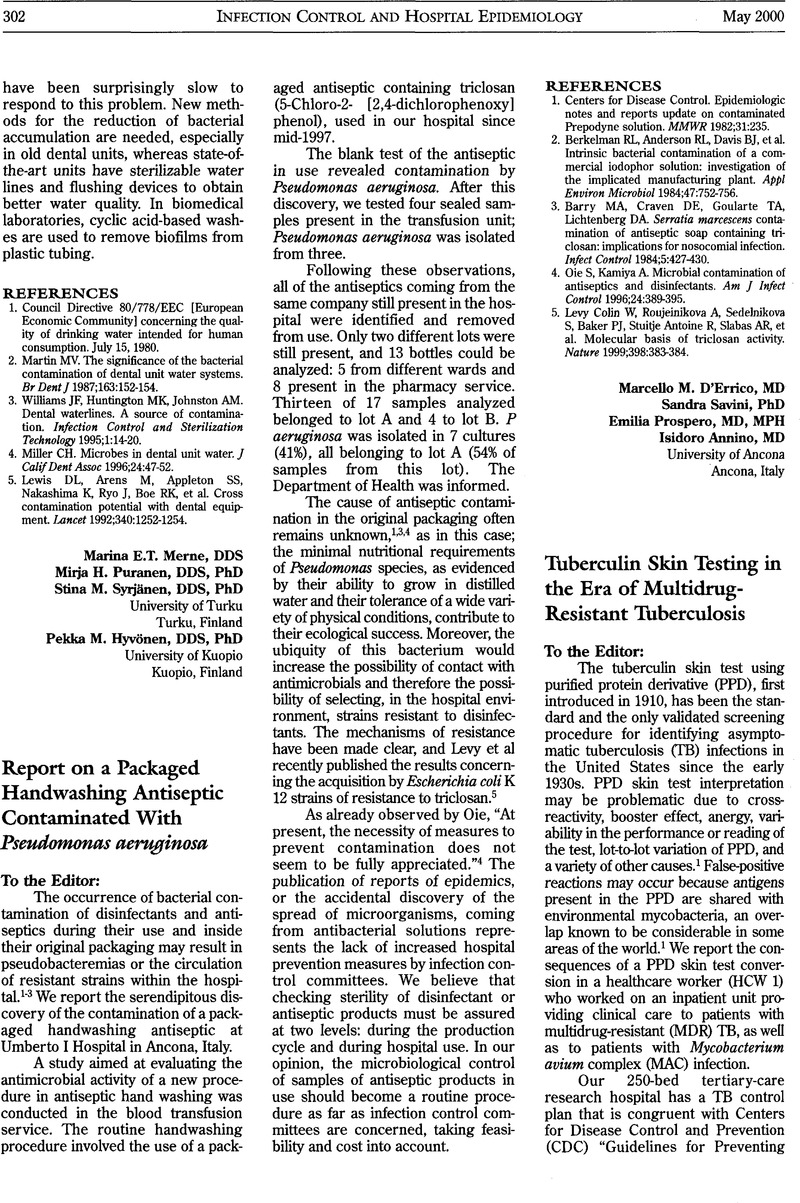Crossref Citations
This article has been cited by the following publications. This list is generated based on data provided by Crossref.
Russo, Antonello
Viotti, Pier Luigi
Vitali, Matteo
and
Clementi, Massimo
2003.
Antimicrobial activity of a new intact skin antisepsis formulation.
American Journal of Infection Control,
Vol. 31,
Issue. 2,
p.
117.
Prospero, Emilia
Barbadoro, Pamela
Savini, Sandra
Manso, Esther
Annino, Isidoro
and
D’Errico, Marcello M.
2006.
Cluster of Pseudomonas aeruginosa catheter-related bloodstream infections traced to contaminated multidose heparinized saline solutions in a medical ward.
International Journal of Hygiene and Environmental Health,
Vol. 209,
Issue. 6,
p.
553.
Rini, M.S.
Gatti, M.
and
Raitano, A.
2012.
Trattamento igienico delle mani per il controllo delle infezioni.
Prevenzione & Assistenza Dentale,
Vol. 38,
Issue. 2,
p.
43.
Lompo, Palpouguini
Agbobli, Esenam
Heroes, Anne-Sophie
Van den Poel, Bea
Kühne, Vera
Kpossou, Cyprien M. Gutemberg
Zida, Adama
Tinto, Halidou
Affolabi, Dissou
and
Jacobs, Jan
2023.
Bacterial Contamination of Antiseptics, Disinfectants, and Hand Hygiene Products Used in Healthcare Settings in Low- and Middle-Income Countries—A Systematic Review.
Hygiene,
Vol. 3,
Issue. 2,
p.
93.
Lompo, Palpouguini
Heroes, Anne-Sophie
Agbobli, Esenam
Kühne, Vera
Tinto, Halidou
Affolabi, Dissou
and
Jacobs, Jan
2023.
Bacterial Contamination of Antiseptics, Disinfectants and Hand Hygiene Products in Healthcare Facilities in High-Income Countries: A Scoping Review.
Hygiene,
Vol. 3,
Issue. 2,
p.
136.



